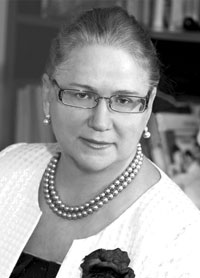Musculoskeletal system disorders and dysfunctions in academic physical education service: mathematical model for kinesiological correction and progress forecast
Keywords:
students, musculoskeletal disorder, dysfunction, dorsal discomfort and pains, mathematical forecast, physical education.Abstract
Objective of the study was to offer a mathematical model for the students’ musculoskeletal disorders correction service complementary to the physical education process.
Methods and structure of the study. Our study was designed to rate severity of the musculoskeletal disorders and dysfunctions in the context of the controllable education service factors – both exogenous and endogenous. The endogenous factors were assumed as controllable by the physical education / training system management with prudent timing and intensity of the training process, and efficient training and rehabilitation tools; and the endogenous ones controllable by the customizable kinesiological methods to effectively mitigate the dorsal disorders and pains. We used the test data correlation analysis to select arguments for a mathematical model for the dorsal discomfort and pains correction service forecast.
We sampled for the mathematical model testing experiment the 1-2-year students (n=300) of Omsk State Technical University majoring in physical education and sports and complaining about dorsal/ spinal discomfort and pains. The sample included 270 sporting students trained in the elective basketball, volleyball, powerlifting and swimming groups (n=60 each), plus a special health group (SHG, n=60).
Results and conclusion. The new mathematical model for the students’ musculoskeletal disorders / dorsal discomfort and pains correction applicable in the physical education process makes it possible to complement the physical education curricula with customizable elective-sport-specific kinesiological methods. The progress test data generated by the mathematical model provides a basis for the individual musculoskeletal disorders / dorsal discomfort and pains correction forecasts to attain progress.
References
Bulkin V.A. Diagnostics of athletes' fitness. Collected works. Leningrad: LNIIFK publ., 1990. pp. 24-38.
Veselovskiy V.P. Practical vertebral neurology and manual therapy. Kazan: Medliteratura publ.. 2010. 344 p.
Deryabina E.K., Kutashov V.A., Ulyanova O.V. Role of physical activity in prevention of osteochondrosis. Tsentralny nauchny vestnik. 2016. V. 14. pp. 22-25.
Ezhov V.V., Subbotin F.A., Shitikov T.A. et al. Topical issues of development and application of manual therapy. Mezhdunarodny nevrologicheskiy zhurnal. 2010. No. 8 (38). P. 79.
Epifanov V.A., Rolik I.S., Epifanov A.V. Osteochondrosis (diagnosis, clinic, treatment). Moscow, 2002. 345 p.
Mikhalev V.I., Aikin V.A., Koryagina Y.V., Reutskaya E.A. Topical issues of biathlon physiology and biomechanics. Uchenye zapiski universiteta im. P.F. Lesgafta. 2014. No. 4 (110). pp. 98-103.
Safonova Zh.B. Health in context of human motor activity. Dinamika sistem, mekhanizmov i mashin. 2014. No. 6. pp. 157-160.
Skryabin E.G., Kolunin E.T. Spinal traumas and disorders prevention in athletic training process. Teoriya i praktika fiz. kultury. 2018. No. 7. pp. 33-35.
Khutiev T.V., Antamonov Y.G., Kotkova A.B. et al. Control of body physical state. Training therapy. Moscow: Meditsina publ., 1991. 213 p.
Shustin B.N. Simulation in sports: theoretical foundations and practical recommendations. PhD diss. abstract. Moscow, 1995 82 p.
GLOBAL action plan for the prevention and control of noncommunicable discuses 2013-2020. Available at: https://www.who.int/nmh/publications/ncd-action-plan/en/.

Additional Files
Published
Versions
- 03-01-2022 (6)
- 03-01-2022 (5)
- 20-12-2021 (4)
- 19-12-2021 (3)
- 19-12-2021 (2)
- 01-11-2021 (1)

